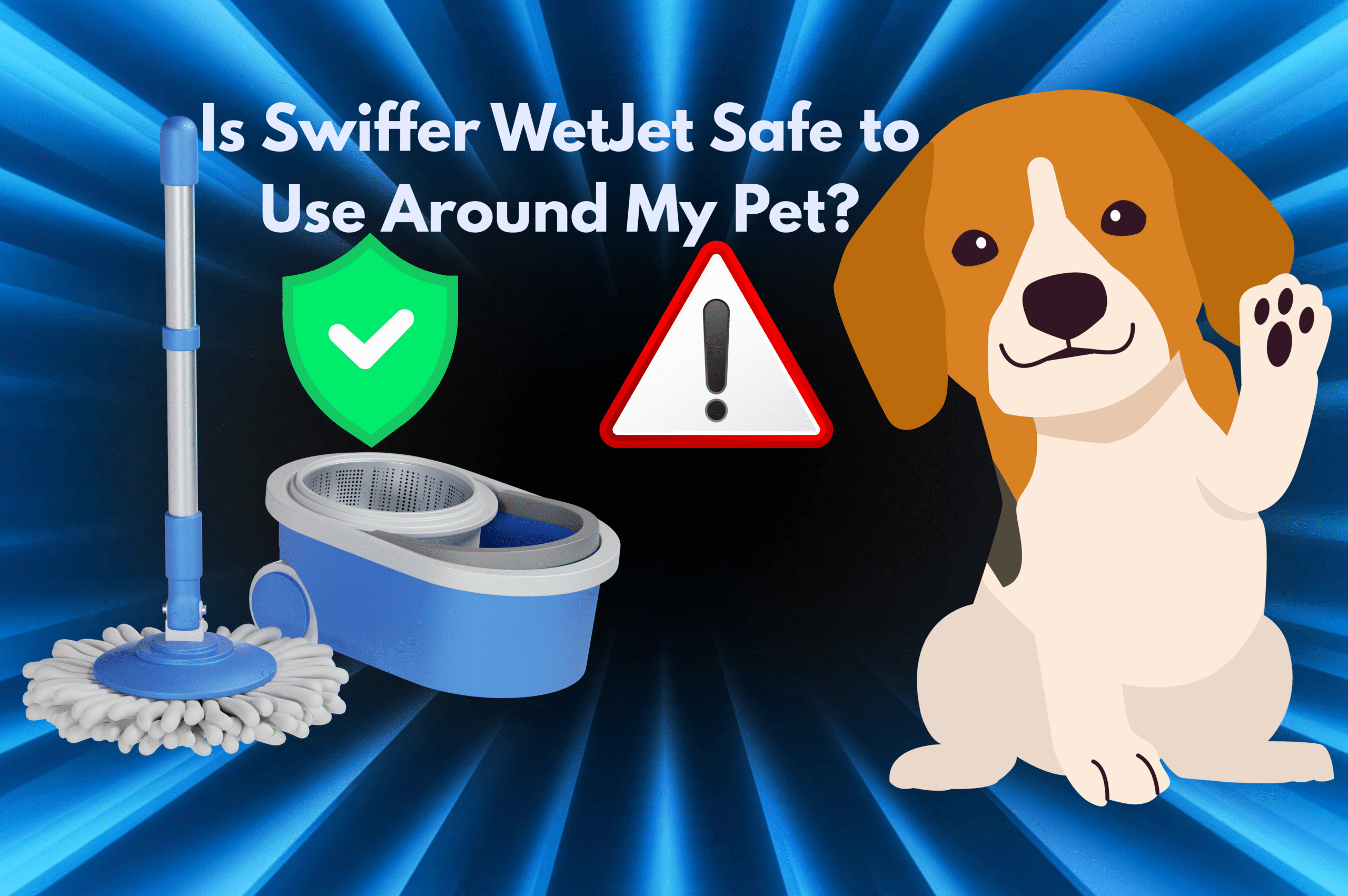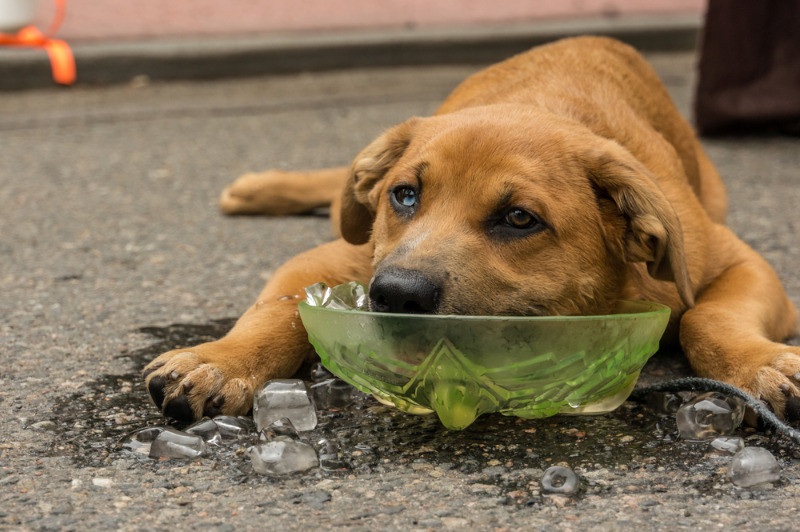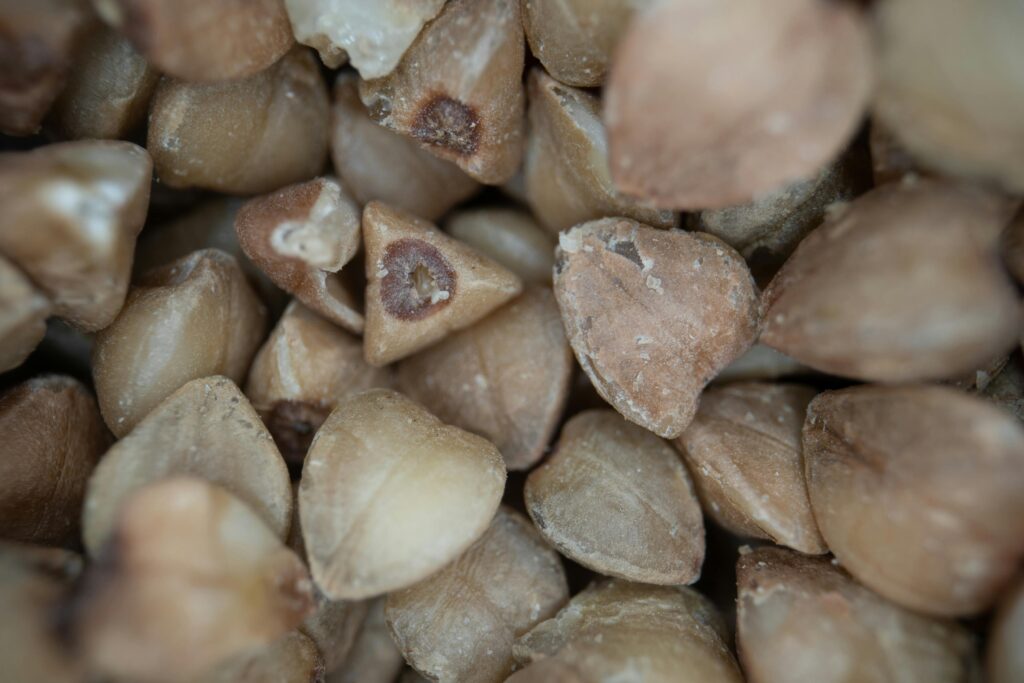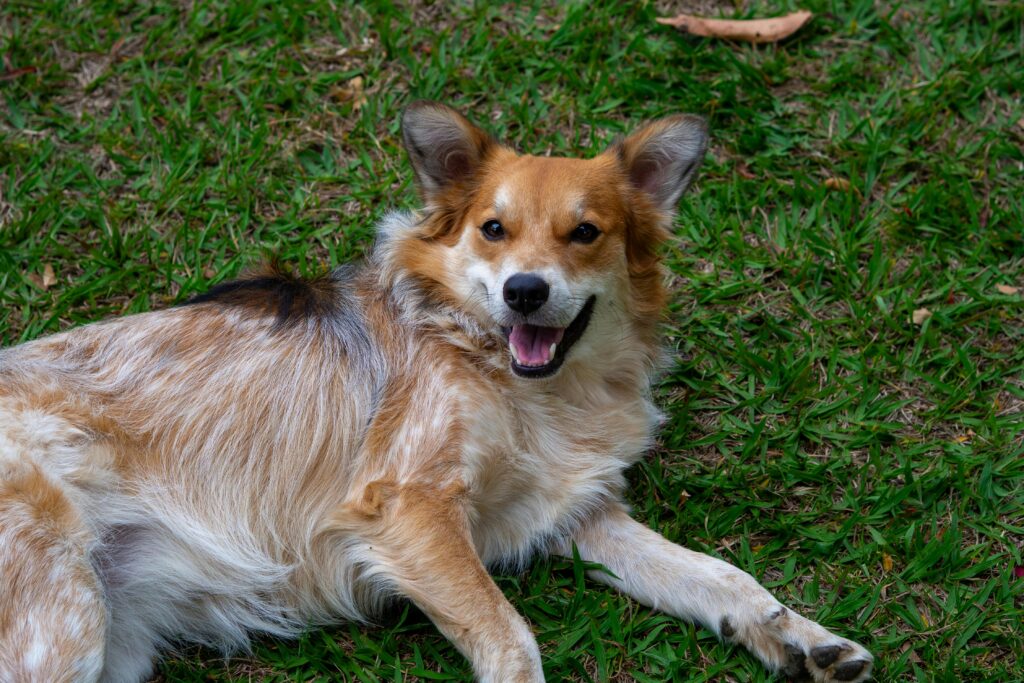- Introduction to Pet Safety and Cleaning Products
- What is Swiffer WetJet?
- Manufacturer Claims on Pet Safety
- Examining the Ingredients: Are They Pet-Safe?
- Veterinary and Toxicology Expert Opinions
- Real Stories and User Experiences
- Comparison with Other Cleaning Products
- Best Practices for Using Swiffer WetJet in a Pet Household
- What to Do If Your Pet is Exposed
- Homemade and Natural Alternatives to Swiffer WetJet
- Understanding Pet Behavior and Floor Safety
- Myths vs. Facts About Swiffer WetJet and Pet Safety
- Tips for a Pet-Safe Cleaning Routine
- Conclusion: Should You Use Swiffer WetJet if You Have Pets?
- FAQs
Yes, Swiffer WetJet is generally considered safe to use around pets. When you’re a pet parent, even something as simple as mopping the floor can turn into a health concern. And that’s not being dramatic. Pets have sensitive noses, skin, and digestive systems. So when people ask, “Is Swiffer WetJet safe to use around my pet?”—they’re not being paranoid. They’re being responsible. This article dives deep into everything you need to know about the Swiffer WetJet and whether it belongs in a pet-friendly household. Let’s break it all down in plain language.
Introduction to Pet Safety and Cleaning Products
Why Pet Owners Must Be Extra Cautious
If you’re a pet owner, you know your furry friends are like curious toddlers with claws. They sniff, lick, and roll around on everything. That’s why the cleaning products you use need to be more than just effective—they need to be safe.
The problem is, not all cleaners are made with pets in mind. Many contain strong chemicals meant to kill bacteria and leave your home sparkling clean. But those same chemicals can wreak havoc on a pet’s liver, kidneys, or skin.
Consider this: your dog comes running in after a walk and lies belly-down on the floor you just mopped. Or your cat, notorious for grooming itself 24/7, walks across the wet floor and then starts licking its paws. If any of the cleaner residues are toxic, it’s going straight into their system.
Even low levels of toxins can build up over time. And let’s not forget: pets are smaller than humans, so even a little bit of a harmful substance can do a lot of damage. That’s why pet owners must be hyper-vigilant about what cleaning products they bring into their homes.
The Importance of Non-Toxic Home Cleaning
A clean home isn’t worth it if it puts your pet’s health at risk. That’s why more people are turning to non-toxic and natural cleaning products. It’s not about being trendy—it’s about being safe. Products labeled “pet-friendly” or “non-toxic” are becoming best-sellers, and for good reason.
Cleaning products should never make you nervous. You should feel confident knowing your floor is clean and your pet is safe walking on it. That’s the sweet spot we’re aiming for.
What is Swiffer WetJet?
Overview of Swiffer WetJet System
Swiffer WetJet is one of the most popular floor cleaning systems out there. It’s sleek, easy to use, and requires no bucket or mop wringing. Just pop in a solution bottle, attach a cleaning pad, and start mopping. Sounds like a dream, right?
Here’s how it works: The WetJet dispenses a pre-mixed cleaning solution through a sprayer, and you glide over it with an absorbent pad that picks up dirt, grime, and spills. It’s especially popular with busy parents, apartment dwellers, and yes, pet owners—because it’s so quick and efficient.
But while it wins points for convenience, what’s in that solution bottle? That’s where the concern begins for pet owners.
Key Ingredients in Swiffer Cleaning Solution
The Swiffer WetJet solution typically includes:
- Water – the main carrier.
- Solvents like Propylene Glycol Butyl Ether help dissolve dirt and grime.
- Surfactants – these are soap-like agents that loosen dirt.
- Fragrance – added for a fresh scent, but not always safe for pets.
- Preservatives, such as Benzisothiazolinone or Methylisothiazolinone, prevent mold/bacterial growth in the bottle.
At first glance, this might not raise alarms. But some of these chemicals are irritants, especially for small animals or those with allergies. The key question is whether these ingredients are toxic at the levels used.
We’ll get into that in more detail later, but know this: not all “harmless” cleaning ingredients are harmless to pets. Cats and dogs have very different biology than humans, and what’s okay for us isn’t always okay for them.
Manufacturer Claims on Pet Safety
Statements by Procter & Gamble (P&G)
Procter & Gamble, the manufacturer of Swiffer WetJet, has long stated that their product is safe for use around pets when used as directed. According to P&G, the WetJet solution is formulated for home use and is not toxic to pets walking on a cleaned and dried surface.
They’ve even gone out of their way to respond to rumors (more on that below), stating that there’s no evidence linking their product to pet illnesses or fatalities. For a big company like P&G, customer trust is vital, and making a product harmful to pets would be PR suicide.
Their official advice? Let the floor dry completely before letting pets walk on it. They also recommend storing cleaning products out of pets’ reach—something you should already be doing anyway.
Misconceptions and Viral Pet Safety Rumors
Back in the early 2000s, an email started circulating claiming that a family’s dog died due to exposure to Swiffer WetJet chemicals. The message went viral, sparking panic among pet owners. But here’s the thing: it was a hoax.
The ASPCA and multiple veterinarians debunked the story. There was no scientific basis, no confirmed cases, no clinical reports linking the product to pet deaths. Yet, like most internet myths, it refuses to die.
Still, the panic it caused was a wake-up call. Pet owners became more aware—and more cautious—about the cleaning agents they were using. And honestly, that’s a good thing. Even if the story was false, it got people asking the right questions.
Examining the Ingredients: Are They Pet-Safe?
Breakdown of Active Chemical Components
Let’s take a closer look at what’s in Swiffer WetJet and whether any of it should worry pet owners.
- Propylene Glycol Butyl Ether: This is a solvent commonly used in cleaners. In large quantities, it can irritate the skin and eyes. However, the concentrations in household cleaning products are generally low.
- Isopropyl Alcohol: Often used for disinfection. While not highly toxic in small amounts, ingestion or prolonged skin exposure can be harmful, especially for small pets.
- Benzisothiazolinone: A preservative that prevents microbial growth. It’s a known skin irritant and can cause allergic reactions in some pets.
- Fragrance: This is a wildcard. “Fragrance” can mean any number of synthetic chemicals. Some essential oils used in fragrances—like tea tree or eucalyptus—are known to be toxic to pets, especially cats.
- Surfactants: These agents help lift dirt from the floor but can cause vomiting or diarrhea if ingested.
In small, diluted amounts and with proper use, these ingredients are generally considered low-risk. But if your pet walks on a wet floor and licks their paws immediately, that’s where problems can arise.
Toxicity Risks to Cats vs. Dogs
Cats are especially sensitive to chemicals because their liver lacks certain enzymes that help break down toxins. A substance that might cause mild symptoms in a dog can be fatal for a cat. That’s why cat owners need to be particularly cautious.
Dogs, being a bit more robust and less fastidious with grooming, might have fewer incidents. But that doesn’t mean they’re in the clear. Floor cleaners can still cause skin rashes, vomiting, or behavioral changes if a dog ingests or absorbs too much.
Veterinary and Toxicology Expert Opinions
Statements from Veterinary Professionals
Veterinarians are often the first to sound the alarm on household products that could pose risks to pets. Many experts in veterinary toxicology agree that, while Swiffer WetJet is generally considered low-risk when used properly, it’s not entirely risk-free, especially in homes with smaller, curious pets.
According to Dr. Lisa Murphy, a veterinary toxicologist at the University of Pennsylvania, products like Swiffer WetJet are formulated to be low in toxicity. However, she emphasizes the importance of keeping pets away from freshly cleaned areas until the surface is completely dry. The reason is simple: wet surfaces may still contain higher concentrations of cleaning agents that can stick to paws and fur.
Another prominent voice, Dr. Justine Lee, a board-certified critical care veterinarian, states that she hasn’t seen widespread toxicity cases from Swiffer WetJet specifically, but still urges caution. She reminds pet owners to read all labels and to never assume a product is safe just because it’s marketed for home use.
In summary, vets are not crying foul about Swiffer WetJet, but they’re also not giving it a free pass. Their recommendation is to use it responsibly and monitor your pet for any signs of reaction.
Animal Poison Control Center Insights
The ASPCA’s Animal Poison Control Center (APCC) is one of the top sources for pet poisoning reports in the U.S. According to their data, Swiffer WetJet has not been a major source of toxic exposure in pets. That’s reassuring.
But it doesn’t mean there have been zero incidents. In most of the few cases reported, the problem wasn’t the product itself—it was how it was used. For example, not allowing the floor to dry completely or letting pets chew on cleaning pads or empty bottles.
The APCC encourages pet owners to:
- Store cleaning products securely.
- Keep pets out of the room during cleaning.
- Mop up excess solution if over-applied.
- Avoid using strong fragranced versions near sensitive pets.
As a rule of thumb, if you wouldn’t let a baby crawl on the floor right after cleaning it, don’t let your pet either.
Real Stories and User Experiences
Positive Feedback from Pet Owners
Many pet owners swear by Swiffer WetJet and have used it for years without any issues. In online forums, social media groups, and product review sections, users frequently mention that they appreciate how quick and effective it is, especially in homes with shedding dogs or litter-tracking cats.
Here are a few examples of positive experiences:
- Marie from Ohio, a dog owner, writes: “I use my Swiffer WetJet weekly, and my golden retriever has never had any health issues. I just make sure to keep him off the floor until it dries.”
- Jordan, a cat dad from Florida, shared on Reddit: “My two cats have walked across floors cleaned with Swiffer WetJet for years. No problems at all. I just don’t let them near the mop or the bottle.”
There’s also praise for the fresh scent and ease of use. Many people say they feel confident using it in a multi-pet household because it dries quickly and doesn’t leave a sticky residue.
Reported Incidents and Concerns
On the flip side, there have been occasional reports of concern. Some users mention mild symptoms in pets like sneezing, skin rashes, or stomach upset, though these are rare and usually linked to direct contact with the cleaning solution or pads.
For example:
- A forum user on a popular pet site mentioned her cat developed a mild rash after lying on a freshly mopped floor. The issue resolved once she switched to a different cleaner.
- Another user on Facebook shared that her dog vomited after licking a small puddle of Swiffer solution that leaked from the bottle. A trip to the vet was needed, but the dog recovered quickly.
While none of these stories are definitive proof of toxicity, they serve as cautionary tales. Like any chemical, misuse—even accidental—can lead to unwanted side effects.
So what’s the takeaway? Always follow instructions, use common sense, and if your pet shows symptoms after you’ve cleaned, call your vet immediately.
Comparison with Other Cleaning Products
Pet-Friendly vs. Pet-Harmful Floor Cleaners
Not all floor cleaners are created equal. Some are specially labeled as “pet-safe,” while others are filled with chemicals that could harm your furry friends. Here’s a quick comparison:
| Cleaner Type | Pet-Safe Label | Common Chemicals | Risk Level |
|---|---|---|---|
| Swiffer WetJet | No | Glycolic acid, alcohol, and pine oil | Low to Medium |
| Nature’s Miracle Hard Floor Cleaner | Yes | Plant-based surfactants | Low |
| Pine-Sol | No | Glycolic acid, alcohol, pine oil | High |
| Method Squirt + Mop | Yes | Non-toxic plant-based ingredients | Low |
| Lysol All-Purpose Cleaner | No | Benzalkonium chloride | High |
Products labeled as “pet-safe” usually avoid harsh preservatives and synthetic fragrances. However, “green” or “natural” doesn’t always mean safe. Always check the ingredient list and do your research.
Natural Alternatives and DIY Solutions
If you’re uncomfortable using conventional cleaners like Swiffer WetJet, there are safer options—some of which you can make right at home. These DIY floor cleaners are made with simple ingredients and are usually safe for pets:
- Vinegar and Water Solution: Mix one cup of white vinegar with a gallon of warm water. Great for cutting grease and disinfecting.
- Baking Soda and Lemon Juice Scrub: Use for stubborn spots.
- Essential Oils (with caution): Some, like lavender, are safe for dogs, but many (like tea tree or eucalyptus) are toxic to cats.
These alternatives may not have the “clean scent” or shine of commercial products, but they’ll give you peace of mind when it comes to your pets’ health.
Best Practices for Using Swiffer WetJet in a Pet Household
Safe Usage Guidelines
You can still use Swiffer WetJet safely if you follow some best practices designed for homes with pets:
- Always keep pets out of the room during cleaning. This prevents them from walking on a wet surface or licking spilled solution.
- Use the right amount of cleaner. Don’t oversaturate the floor.
- Allow floors to dry completely before letting pets back in. This usually takes just a few minutes.
- Store all cleaning supplies securely. Never leave the mop or solution bottle where your pet can chew on it.
- Use pads only once. Reusing pads can lead to a build-up and increase the risk of residue on your floor.
- Consider ventilating the room. Open windows if possible to reduce chemical scent buildup.
By using these precautions, you dramatically reduce any potential risks while still enjoying a clean, fresh-smelling home.
Post-Cleaning Precautions
After you’re done mopping, take a moment to inspect the area:
- Check for wet spots or puddles.
- Make sure there’s no residue or sticky areas where pets might lie down.
- Wash your hands after handling cleaning materials, especially before touching your pet.
If you’re particularly cautious, you can wipe down your floor once more with just water using a microfiber mop. It’s an added step, but it can remove leftover cleaner traces.
What to Do If Your Pet is Exposed
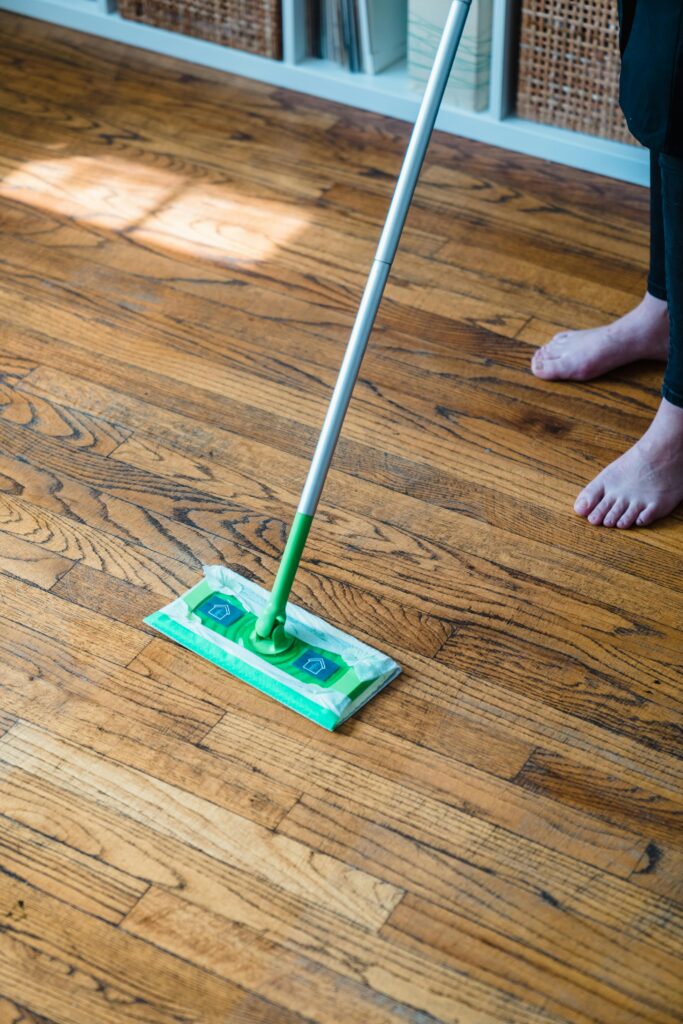
Signs of Toxic Exposure in Pets
Even with all the right precautions, accidents can happen. Maybe your dog walked across a wet floor, or your cat found a discarded cleaning pad to chew on. Knowing the warning signs of chemical exposure can save your pet’s life.
Here are common symptoms that may indicate your pet has come into contact with something toxic:
- Excessive drooling
- Vomiting or diarrhea
- Red or irritated skin, especially on paws or belly
- Lethargy or weakness
- Coughing or wheezing
- Trembling or seizures (in severe cases)
In cats, you might notice increased grooming of the paws, which can lead to ingestion of harmful residues. Dogs may whimper, act anxious, or avoid using a paw that feels irritated.
Don’t wait to see if the symptoms get worse. Early intervention is key. The sooner you act, the better the chances of a full recovery.
Immediate Steps to Take
If you suspect your pet has been exposed to Swiffer WetJet or any cleaning chemical, follow these steps immediately:
- Remove your pet from the area. Get them to a safe, clean space away from the source of exposure.
- Check their paws and fur. Wipe them down with a damp cloth to remove any chemical residue. Don’t use harsh soaps—just water.
- Prevent further grooming. Try to keep your pet from licking its paws or fur until they’re clean. A cone (e-collar) may help in emergencies.
- Call your veterinarian. Even if symptoms seem mild, your vet can guide you on the best course of action.
- Contact Animal Poison Control. The ASPCA Animal Poison Control Center (1-888-426-4435) can provide expert advice 24/7. A consultation fee may apply, but it’s worth every cent in a crisis.
Time is critical. If your pet is showing signs of distress, don’t “wait and see.” Act immediately to minimize the impact.
Homemade and Natural Alternatives to Swiffer WetJet
DIY Pet-Safe Floor Cleaner Recipes
If you’d rather not take any chances, making your own floor cleaner is a safe, affordable alternative. These recipes use everyday household ingredients that are generally considered safe for pets:
1. Vinegar and Water
- Mix 1 cup of white vinegar with 1 gallon of warm water.
- Optional: Add 1-2 drops of lavender essential oil (safe for dogs only).
2. Lemon Juice and Baking Soda
- Mix ½ cup lemon juice, ¼ cup baking soda, and 1 gallon of warm water.
- Great for deodorizing and cutting grease.
3. Castile Soap and Vinegar
- Mix 1 tablespoon Castile soap with 1 gallon of water.
- Avoid using this with vinegar on waxed floors as it can dull the finish.
Important Tips:
- Always test your DIY cleaner on a small patch of flooring first.
- Store leftover cleaner in a sealed bottle, out of pets’ reach.
- Avoid tea tree, eucalyptus, and clove essential oils, as they can be toxic to pets, especially cats.
Pros and Cons of Natural Cleaning
Pros:
- You know exactly what’s in the cleaner.
- Environmentally friendly and biodegradable.
- Cost-effective over time.
- Usually safe for all pets, including birds and exotic animals.
Cons:
- May require more elbow grease.
- Doesn’t always have a long-lasting “clean” scent.
- May not be strong enough for deep disinfecting in high-traffic areas.
Natural cleaners offer peace of mind for pet owners, especially those with animals that are prone to allergies or sensitivities.
Understanding Pet Behavior and Floor Safety
Why Pets Lick Floors
If you’ve ever caught your dog or cat licking the floor, you’re not alone. It’s weird—but totally normal behavior. Pets lick the floor for several reasons:
- Curiosity: They’re naturally investigative and explore the world with their mouths.
- Food Residue: Even the tiniest crumb or spill can draw their attention.
- Stress or Anxiety: Repetitive licking is sometimes a sign of emotional discomfort.
- Medical Issues: Nausea or digestive problems can lead pets to lick non-food surfaces.
The problem? If they’re licking a floor that’s been recently mopped with a chemical cleaner, they’re ingesting whatever’s left behind. That’s why it’s so crucial to make sure your floor is dry and free of residue before allowing your pet back on it.
Keeping Floors Clean and Safe
Here are a few quick tips to keep your floors safe and clean, especially for pets:
- Use mats near food and water bowls to catch spills.
- Wipe paws after walks to prevent outdoor dirt from spreading.
- Spot-clean messes quickly to avoid full mops as often.
- Keep a cleaning routine to reduce the buildup of grime and allergens.
Think of it this way: you’re not just cleaning for yourself—you’re cleaning for the tiny paws that pad across your floors every day.
Myths vs. Facts About Swiffer WetJet and Pet Safety
Internet Hoaxes Debunked
The infamous email that circulated about Swiffer WetJet killing a dog has been widely debunked. Even Snopes, the internet’s myth-busting authority, confirmed it was false. No verified veterinary reports, no real medical proof—just a viral story that struck a nerve.
Unfortunately, once misinformation takes off online, it’s hard to put the brakes on it. The good thing? That email did raise awareness. It made pet owners more cautious, more curious, and more informed.
So, the myth? That Swiffer WetJet has killed pets en masse.
The fact? There’s no clinical or veterinary evidence to support that claim.
Scientific Evidence and Clarifications
Multiple toxicology experts and animal poison control agencies have looked into Swiffer products. The consistent consensus? When used properly, Swiffer WetJet poses a low risk to pets. The key phrase here is “used properly.”
If you’re mopping recklessly, leaving solution puddles behind, or letting your pets chew on the mop head, of course, there’s risk. But used with care, the ingredients in Swiffer WetJet don’t accumulate in dangerous amounts on floors.
So, yes—science is on your side. You don’t have to throw out your WetJet. Just use it smartly.
Tips for a Pet-Safe Cleaning Routine
Creating a Cleaning Schedule That Works
Consistency is key. Here’s a basic cleaning schedule that balances cleanliness with pet safety:
- Daily: Spot clean pet messes and sweep/vacuum high-traffic areas.
- Twice Weekly: Use a damp mop with water or pet-safe cleaner.
- Weekly: Use Swiffer WetJet or a DIY cleaner for deeper cleaning.
- Monthly: Move furniture and do a more thorough clean (under beds, couches, etc.).
This routine keeps allergens, fur, and dirt under control—without overexposing your pet to cleaning chemicals.
Choosing Products Wisely
Before buying a cleaner, check:
- Label warnings: Does it say “Keep away from pets or children”?
- Fragrance: Is it heavily scented? That might be a red flag.
- Ingredients list: Do a quick web search for any unknowns.
And remember, not all “green” products are pet-safe. Research is your best friend.
Conclusion: Should You Use Swiffer WetJet if You Have Pets?
So, what’s the final word? Yes, you can use Swiffer WetJet if you have pets—if you use it responsibly.
It’s not a pet-specific product, but it’s not a danger either, at least not when used as directed. Most concerns arise from improper use or misinformation. The vast majority of pet owners who use Swiffer WetJet never report problems.
Still, it’s smart to stay cautious. Let the floors dry completely. Store the bottle and mop away from pets. Consider natural alternatives if you’re still unsure. And always watch your pet for unusual behavior after cleaning.
Your pet is family, and keeping them safe doesn’t mean you have to sacrifice a clean home. With a little extra care, you can absolutely have both.
FAQs
Can I use Swiffer WetJet if I have a puppy?
Yes, but keep your puppy off the floor until it’s fully dry. Puppies are more curious and sensitive, so extra caution is smart.
Are there any known pet deaths linked to Swiffer?
No. There are no confirmed veterinary or scientific reports linking Swiffer WetJet to pet fatalities. The viral rumor was a hoax.
What should I do if my cat licks a recently cleaned floor?
Wipe their paws and mouth with a damp cloth and monitor for symptoms. Call your vet if they seem ill or are vomiting.
Is there a Swiffer product made specifically for pet owners?
Yes! Swiffer makes dry and wet pads labeled for pet households, but the solution formula is generally the same. Always check labels.
How long should I wait after mopping to let pets on the floor?
Wait until the floor is completely dry—typically 5 to 10 minutes, depending on ventilation and humidity.
Please don’t forget to leave a review.

